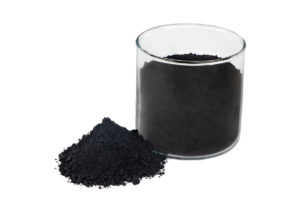Heavy metals are dangerous contaminants that can be found in water sources worldwide. These elements, such as lead, mercury, arsenic, chromium and cadmium, can cause severe health problems if ingested. It is crucial to implement effective methods for heavy metal removal in water to safeguard public health.
In this article, we will explore the various reliable techniques used to remove heavy metals from water. By understanding these processes better, we can work towards providing safer drinking water and preserving our environment.
Chemical Precipitation
Chemical precipitation is a widely-used technique to remove heavy metals from water. The process involves adding chemicals to contaminated water to convert dissolved metals into insoluble solid particles. These solids then settle at the bottom of the container and can be easily separated.
Lime (calcium hydroxide) and sodium hydroxide are common precipitating agents used in this method. Other chemicals like ferrous sulfate and aluminum salts can also be used depending on the specific type of metal ions present in the water. The optimal pH level must be maintained during the precipitation process to ensure efficient removal of heavy metals.
Although chemical precipitation is an effective method for removing heavy metals from water, it produces waste sludge which requires further treatment before disposal.
Ion Exchange
Ion exchange is another popular technique for heavy metal removal in H2O. It employs a selective process wherein the unwanted metal ions are replaced by other ions with similar charge characteristics present in a specialized resin column.
The resin beads are either charged with positive ions (cation exchange resins) or negative ions (anion exchange resins). As contaminated H2O passes through the resin bed, heavy metal ions bind themselves to the resin beads, while releasing less harmful ions into the water. Once the resin reaches its capacity for binding metal ions, it needs to be regenerated or replaced.
Ion exchange systems are effective in removing a wide range of heavy metals from H2O and are extensively used in both industrial and domestic applications. However, proper management and disposal of spent resins can prove challenging as they can contain high concentrations of heavy metals.
Adsorption
Adsorption is another widely-used method for heavy metal removal in H2O. The process involves attracting and adhering the heavy metal ions onto the surface of an adsorbent material.
Activated carbon, a highly porous form of carbon with large surface area, is one of the most commonly used adsorbents for heavy metal removal. It has numerous active sites on its surface to which metal ions readily attach themselves. Other materials like chitosan, zeolites, silica gel, and clay minerals have also been employed as adsorbents owing to their low cost and availability.
The efficiency of adsorption depends on several factors including pH level, initial concentration of heavy metals, temperature, contact time between adsorbent and contaminated water, and presence of competing ions.
A major advantage offered by adsorption over other methods is that the resulting waste material generated (once loaded with heavy metals) can be disposed more conveniently than sludge produced from chemical precipitation or spent resins produced by ion exchange processes.
Electrocoagulation
Electrocoagulation is an advanced technique that has gained significant attention in recent years for heavy metal removal from water. This method uses an electric current to induce coagulation – a process that forms flocs by clumping together colloidal particles charged with opposite electrical charges.
In electrocoagulation, the contaminated water flows through a reactor containing sacrificial metal electrodes, typically made of iron or aluminum. When an electric current is applied, the electrodes release ions that react with contaminants in the water, forming insoluble compounds that can be easily removed.
Not only is electrocoagulation highly effective in removing heavy metals and other pollutants from water but it also removes bacteria, viruses, and parasites. Additionally, the process generates a small amount of solid waste which can be more easily managed as compared to waste produced by chemical precipitation.
Conclusion
To ensure safe drinking water and protect the environment from hazardous heavy metals, it is crucial to employ suitable methods for their removal. Chemical precipitation, ion exchange, adsorption, and electrocoagulation are reliable techniques that have been widely used for this purpose. By selecting the appropriate method based on factors such as efficiency, cost-effectiveness and waste management concerns associated with each process one can achieve significant reductions in heavy metal contamination in H2O.




